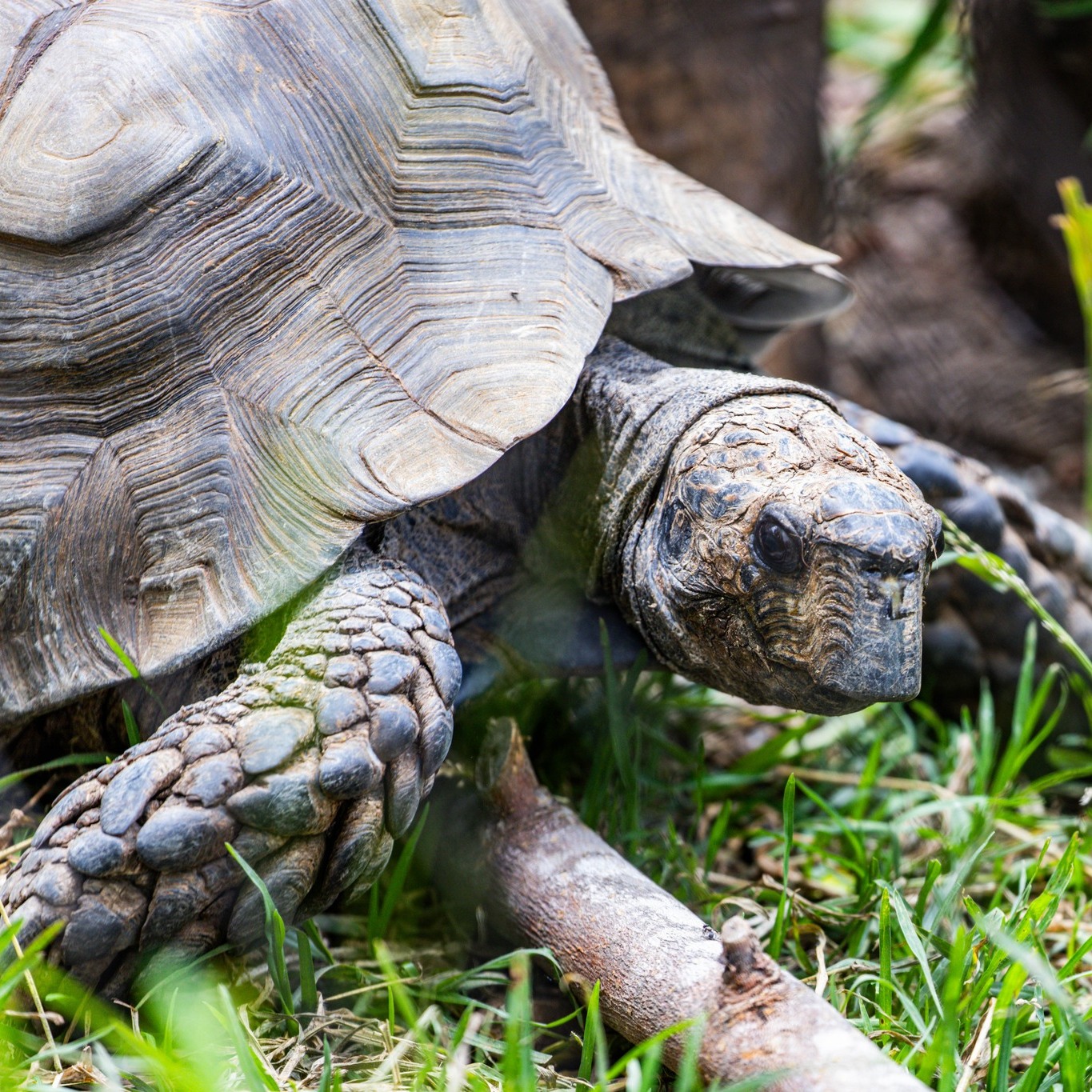- Understanding brumation and its significance for reptiles during colder months.
- Observing reptile behaviors and needs during their active spring and summer periods.
- Examining the example of Mathilda the Burmese mountain tortoise and her interaction with Raj the red panda.
- Exploring the role of temperature changes in reptile activities and well-being.
- Insights into conservation and habitat management for reptiles.
Brumation is a critical physiological process that enables reptiles to survive the cold, harsh months of winter. Unlike hibernation in mammals, brumation is not a deep sleep but rather a state of significantly reduced activity and metabolic rate. It allows reptiles to endure periods when temperatures are too low to sustain their typical metabolic functions. During brumation, they may become lethargic, stop eating, and seek refuge in burrows or under rocks to maintain a stable environment. Understanding this process is crucial for anyone interested in herpetology, as it underscores the adaptability and resilience of these fascinating creatures.
As temperatures rise with the advent of spring and summer, this brings about a remarkable change in reptile behavior. It’s a time of reawakening for these animals, as they emerge from their dormant state in search of food, mates, and optimal living conditions. Observing these behaviors offers invaluable insights into their biological rhythms and environmental needs. For instance, you’ll notice increased basking activities as reptiles seek sunlight to thermoregulate, which is vital for their physiological processes such as digestion and immune function.
In the lush surroundings of Santa Barbara, Mathilda the Burmese mountain tortoise serves as a prime example of this seasonal rekindling. Living alongside Raj the red panda, she benefits from a well-maintained habitat that meets her species-specific needs. This shared environment not only highlights the compatibility of different species living together but also underscores the importance of habitat management in zoos and conservation areas. It reflects the collaborative ecosystem within captivity that mimics their natural habitats as closely as possible.
Temperature plays a pivotal role in the life of reptiles, affecting their metabolic rate, behavior, and overall well-being. As ectothermic animals, reptiles rely heavily on external heat sources to regulate their body temperature. This dependence makes them particularly susceptible to the effects of climate change and habitat destruction. With rising temperatures, reptiles may come out of brumation earlier than usual, potentially affecting their life cycles and reproductive patterns. This factor necessitates careful monitoring and reevaluation of habitat conditions to ensure these animals’ health and survival.
From a conservation perspective, managing reptile habitats requires continuous diligence. Human-induced environmental changes introduce several challenges, but conservation efforts aim to mitigate these impacts through strategic planning and adaptive management. By providing suitable living conditions, we demonstrate a commitment to preserving biodiversity. Effective management practices must consider local climate conditions, species-specific needs, and the intricate balance within ecosystems. Protecting these environments is not simply about maintaining a zoo exhibit; it’s crucial for the survival and welfare of the species concerned.
Reptiles, like Mathilda the Burmese mountain tortoise, are not just survivors of the cold months but active participants in the complex web of life. As we observe their emergence from brumation with rising temperatures, it becomes apparent how interconnected our approaches to conservation and zoo management are with broader ecological dynamics. Our responsibility lies not only in catering to their immediate needs but also in fostering environments where they can thrive naturally and sustainably. Through conscious stewardship, we can ensure that our reptilian friends continue to flourish amidst our changing world.
*****
Source Description
Be on the lookout for our reptilian friends coming out of brumation now that the temperatures are rising! 😎☀️🐢
Brumation is a prolonged state of sluggishness or inactivity exhibited by reptilian species of animals during the winter or prolonged periods of cold weather.
As we enter the spring and summer months in Santa Barbara, expect to see more of Mathilda the Burmese mountain tortoise (pictured) in her shared habitat with Raj the red panda!
Alt-text: A slow and steady Mathilda the Burmese mountain tortoise lifts a scaly leg over a branch as she explores her habitat.


